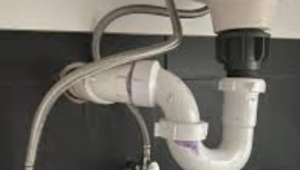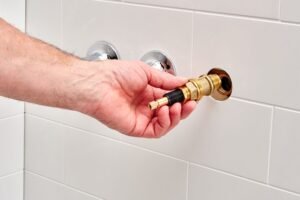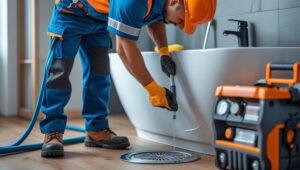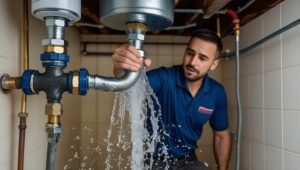The Importance of Backflow Prevention for Safe Drinking Water
Providing your family with clean and safe water is essential for their health. Testing your water supply for backflow is one way to ensure it remains uncontaminated. Backflow testing occurs when the clean water flow reverses, potentially introducing harmful contaminants. This article covers the basics of backflow, reasons to conduct regular testing, and tips on securing your home against it.
1. What is Backflow?
Backflow refers to the disruption or reversal of normal water flow in a plumbing system, often caused by shifts in water pressure, such as a burst pipe or water main repair. Under normal conditions, water flows one way—from the municipal supply into your home. However, during backflow, this direction reverses, pulling contaminated water into the system from sources like irrigation, sewer systems, or garden taps.
Both residential and commercial buildings are susceptible to backflow issues, which can often go unnoticed. Regular backflow testing helps prevent these issues and ensures a safe water supply.
2. Backflow: The Health Effects
The most significant risk of backflow is contamination. When water flow reverses, pollutants like pesticides, chemicals, fertilizers, bacteria, and even sewage may enter the clean water supply. Contaminants in drinking water can pose serious health risks, including infections and gastrointestinal diseases, and can also affect water used for cooking, bathing, and cleaning.
3. What Are Backflow Prevention Devices and Why Are They Used?
A backflow prevention device is installed within your plumbing system to block the reverse flow of water between pipes. This device is essential in keeping water safe and free from contaminants. However, these devices can wear out or break over time, particularly in systems with frequent pressure fluctuations. Regular testing ensures that the backflow preventer remains effective and your water supply is protected.
4. The Backflow Testing Procedure
Backflow testing requires a professional plumber who is certified to check backflow prevention devices. The plumber inspects the equipment for signs of wear, leaks, or other defects. If any issues are found, they’ll make necessary repairs or replace the device to maintain water quality.
In most areas, property owners are required to conduct backflow testing at least annually, though checking local regulations for specific requirements is advisable.
5. Advantages of Frequent Backflow Testing
Regular backflow testing offers several benefits, including:
- Ensures Safe Water: Routine testing helps keep contaminated water from seeping into your home, ensuring a safe supply for household use.
- Protects Plumbing: Prevents damage to pipes and fixtures caused by backflow, saving on costly repairs.
- Provides Peace of Mind: Knowing that your backflow preventer is functioning correctly brings peace of mind about the safety of your family’s water.
6. How to Schedule Backflow Testing
Scheduling backflow testing is straightforward. Contact a qualified, certified plumber in your area for backflow testing services. Many plumbing companies provide these services and can visit your home to conduct the test within an hour.
7. Conclusion
Regular backflow testing is essential for protecting your home’s water supply from contamination. A properly functioning backflow prevention device can safeguard your family’s health and help you avoid expensive repairs. If you haven’t tested your backflow system recently, consider scheduling an appointment to ensure that your water remains clean and safe.






